Columns
The spectre of a ‘covfefe’ world!
Geopolitical strategists in Nepal’s neighbouring capitals fear Washington’s intentions more than each other’s.
CK Lal
Prime Minister Khadga Prasad Sharma Oli chose New York as his first visit abroad to attend the 79th United Nations General Assembly. He held a 45-minute-long meeting on the sidelines with his Indian counterpart, Prime Minister Narendra Modi. Sharma Oli described the talk as ‘positive’. Modi termed it ‘very good’. Shorn of diplomatese, both statements implied that the meeting had failed to restore mutual trust between them.
It took Premier Sharma Oli a while to get an invitation from his Chinese counterpart. The agenda of the visit had to be negotiated with the Nepali Congress, the largest party in the Pratinidhi Sabha that is keeping the government afloat. The chattering classes of Kathmandu were excited that Sharma Oli had chosen Beijing over New Delhi as his first official visit. The misplaced enthusiasm is meaningless: Beijing is politically hallowed for communists of all shades just as Banares is sacred for every pious Hindu.
In any case, Nepal must be the only country where China and India are considered competitors. The Chinese economy is nearly five times bigger than India’s GDP. The military spending of Beijing is at least three times that of India. Ranked at 75, China is grouped high on the global Human Development Index (HDI) while India with its 134 score falls well below Bhutan and Bangladesh. Beijing and New Delhi aren’t in the same league.
Geopolitical strategists in the capital cities of Nepal’s neighbouring countries are more fearful of Washington's intentions than those of each other. For a brief while in the 1950s, the United States worked with Indians to contain China and stop Beijing from spreading its wings in South Asia. Officially, the Ping-Pong diplomacy began in 1971, but a lot of hush-hush preparations must have been done earlier for the sudden thaw in the frozen relations.
Once Chairman Mao Zedong shook the hand of President Richard Nixon on February 21, 1972, the balance of power in the world began to change irreversibly. Chairman Mao had found a stepping stone to emerge out of the well of seclusion that he had dug for the Chinese with his disastrous campaigns of the Great Leap Forward and the Cultural Revolution.
Awakened dragon
Unable to withstand the pressure of perestroika (restructuring) and glasnost (openness), the USSR’s downfall began with the fall of the Berlin Wall and gained momentum with the collapse of satellite regimes in East Europe. The greatest political experiment of what historian Eric Hobsbawm has called “the short twentieth century 1914-1991” completely disintegrated with the humiliating ouster of Mikhail Gorbachev.
The contested concept of unipolarity did have its brief moment in the sun, but it soon dissolved when Francis Fukuyama’s The End of History? hypothesis was countered by his guru Samuel Huntington’s The Clash of Civilizations? formulation heralding the beginning of a multipolar world of contesting civilisations. Meanwhile, the Paramount Leader of China Deng Xiaoping had already started a modernisation drive in the 1980s with his oft-quoted command: “observe calmly, secure our position, cope with affairs calmly, hide our capacities and bide our time, be good at maintaining a low profile, and never claim leadership.”
Exalted with the title of “core leader”, President Xi Jinping has built the structure of global ascendency on the ground that Mao broke with the help of President Nixon in the 1970s. President Deng laid the foundation with the cooperation of President Ronald Reagan in the 1980s, and President Jiang Zemin erected a scaffold of export-led growth with the collaboration of President Bill Clinton in the 1990s, which culminated in China being admitted into the World Trade Organisation.
Despite its status of being the technological giant and a military superpower throughout the Cold War, Moscow lacked the economic muscle to challenge the hegemony of Washington that had been institutionalised through the Bretten Wood Sisters—the International Monetary Fund (IMF) and the World Bank Group—that undergirded the global trade and industry. The legacy of the British Empire had left English as the lingua franca of a large part of the world. It helped establish Hollywood films, British publications and New York fashion as the desirable elements of the upwardly mobile lifestyle of the growing middleclass in the Third World countries.
The financial hub had shifted from London to New York. The Silicon Valley in California had emerged as the nucleus of cutting-edge technology. Backed by enormous endowments, the Ivy League institutions were attracting the best and brightest of the world. All that the USSR had to offer in comparison was the theory of the inevitable collapse of capitalism. The Chinese began to grow out of all such illusions in the 1970s and have gone about building an alternative to the plutocratic capitalism of the Washington Consensus with their model of authoritarian capitalism based on the Beijing Consensus.
Wounded eagle
President Xi Jinping’s concept of “building a community with a shared future for mankind” is an outline of an alternative world order. The Chinese designs of the Belt and Road Initiative (BRI), the Shanghai Cooperation Organisation (SCO), the BRICS grouping that has more members than the acronym can accommodate, the Global Development Initiative (GDI), the Global Security Initiative (GSI), the Global Civilisation Initiative (GCI) and the Asian Infrastructure Investment Bank (AIIB) are aimed at what has been termed as “Making China Great Again”.
Just as unipolarity is an oxymoron, multipolarity is merely a desire of emerging nations for a seat at the high table. Ultimately, they must coalesce around a country with the determination and wherewithal to offer an alternative to the existing world order. Even though the Russians hosted the 16th annual BRICS summit at Kazan, China was the power behind the throne of President Vladimir Putin. President Xi Jinping agreed “in principle to the suggestions made by Prime Minister Narendra Modi” at the summit, which is a signal to the world that India will be careful in future about encircling China on behalf of the US.
The collective anxiety of the geopolitical and geoeconomic establishment in the US about the future of their unchallenged dominance for almost a century is understandable. The incoherence in the statements of President Donald Trump probably comes from the confusion of the Make America Great Again (MAGA) team that has little idea about the frustrations of many countries with American hegemony.
President Trump was unintelligibly provocative—meaningless covfefe is but one example—in his first term. It seems his second stint is going to be stormier. He is promising punitive tariff hikes. That will hasten the triumph of China-centric and China-inspired Pax Autocratica over Pax Democratica. President Trump appears to be determined to complete the task begun by President Nixon in the 1970s.
Premier Sharma Oli’s pilgrimage to Beijing is a sideshow. Chieftains from tributary states are often rewarded for their fidelity, and Sharma Oli is likely to comeback with enough lollipops to silence his critics at home. But Beijing will perhaps be more interested in asking that Kathmandu shift its primary loyalty from Washington to Beijing. Nepal’s diplomatic dilemma will be much more perplexing than occasionally flashing the China card at New Delhi to assert its sovereignty.




 5.4°C Kathmandu
5.4°C Kathmandu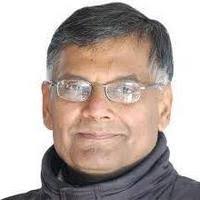


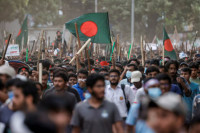
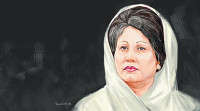
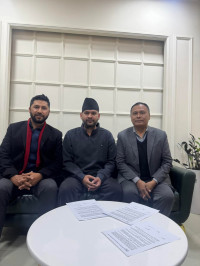





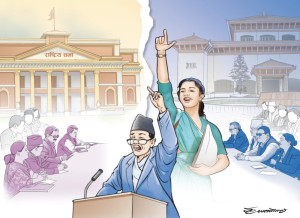


%20(1).jpg&w=300&height=200)

